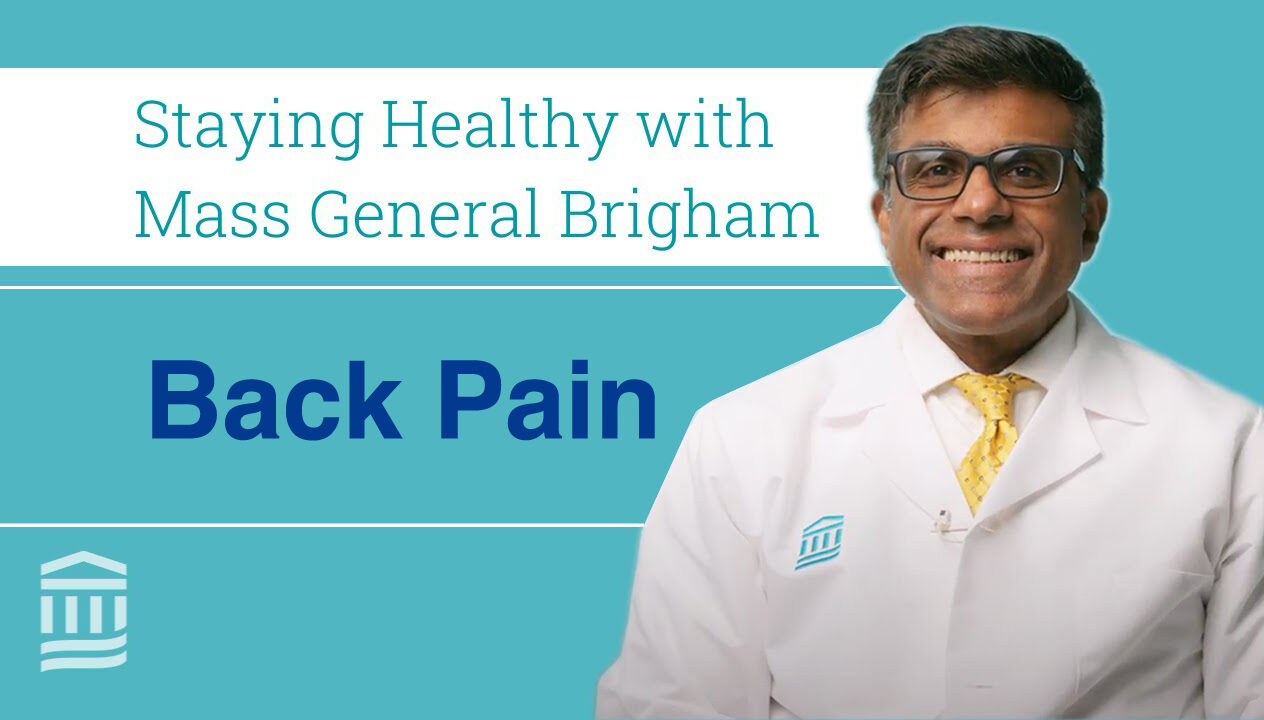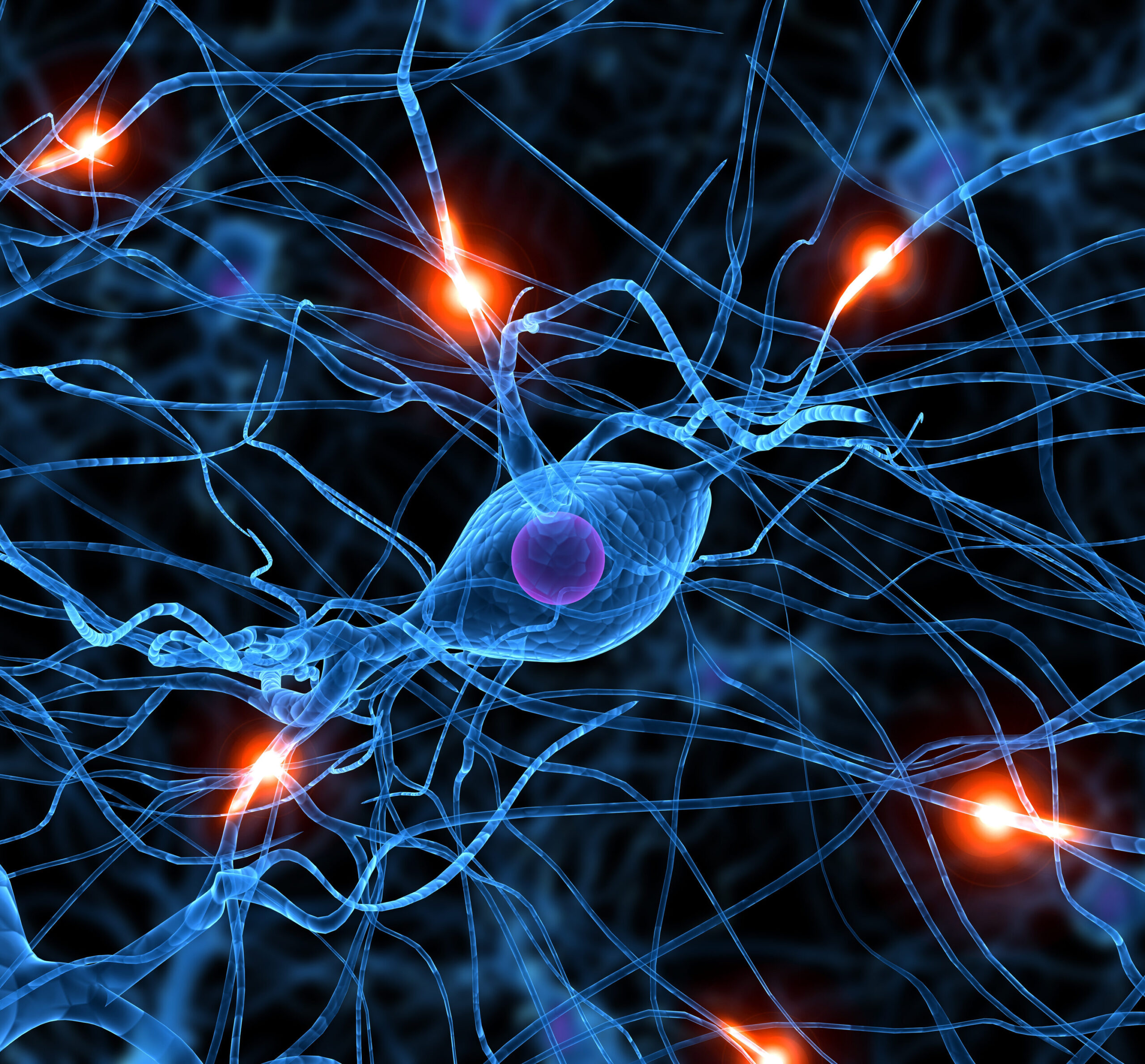
Back Pain Causes, Diagnosis, and Treatment
More than 80 percent of people experience back pain at some point in their life. In the past three months, one in three people has had back pain. Zacharia Isaac, MD, a Mass General Brigham spine care and pain management specialist, reviews back pain causes, treatment, and prevention tips. Isaac is chief of spine care and pain management at Spaulding Rehabilitation Hospital and associate chairman of physical medicine and rehabilitation at Brigham and Women’s Hospital. Issac discusses how you can work with your primary care provider (PCP) to get relief from back pain.
Douglas Campbell, MD, a Mass General Brigham emergency medicine doctor, describes when back pain may require a trip to urgent care or the emergency department. In some cases, a virtual urgent care appointment may be appropriate. He cares for patients at Mass General Brigham Urgent Care.
Back pain causes
Most people have experienced back pain at some point in their life. Common causes of chronic back pain include:
- Aging discs and disc herniations
- Arthritis in the joints
- Sprains or ligament strains
- Other processes in the central nervous system. The central nervous system is made up of the brain and the spinal cord.
“It’s very rare that patients with back pain have concerning things like tumors or infections, and even fractures are not that common,” explains Isaac.

Back Pain: Causes, Diagnosis, Tips, and Staying Healthy
Why is back pain so common? What are the causes of back pain? How do you diagnose back pain? Zacharia Isaac, MD, chief, spine care, pain management, Spaulding Rehabilitation Hospital, offers tips for anyone experiencing back pain.
Back pain diagnosis
It can be difficult to diagnose the specific cause of back pain. “It’s so common that doctors call it nonspecific back pain because it doesn’t always have a structural cause,” Isaac explains. “MRIs can show various findings, but they’re often seen in people without any pain whatsoever.”
However, if your symptoms last for more than three months, and if you have any other concerning medical conditions, it’s worth talking to your PCP. Many Mass General Brigham primary care practices for adults and children offer same-day, in-person, and virtual visits.
Urgent care for back pain
If you don’t have a PCP or no appointments are available, you can go to urgent care.
“An urgent care provider can manage a large portion of care for back pain. They can make diagnoses from a physical exam and sometimes X-ray imaging,” says Campbell.
An urgent care provider reviews your medical history and performs a physical exam that includes your back and spine. They check the following:
- The location of your pain
- Your overall muscular strength and tension
- Your ability to walk and balance
- Your reflexes
- Your reaction to different stimuli, including touch
This in-person physical exam is important for certain symptoms, like numbness or a tingling sensation. “For anything with a neurological symptom, even if it seems minor, a physical exam is very important to evaluate what the patient is experiencing and make sure it’s not something more serious,” Campbell explains.

Help Us Improve Brain Health
The Brigham has long been a leader in treating brain diseases and conditions, shaping the diagnosis and treatment of brain diseases worldwide.
Virtual urgent care for back pain
Depending on your symptoms, Mass General Brigham Virtual Urgent Care can be another helpful option. It’s open to all patients ages 3 and up, even if they haven’t seen a Mass General Brigham provider before. Both new and current patients can schedule a virtual urgent care visit for that day or the next day on the Mass General Brigham Patient Gateway.
“For minor aches and pains that don’t have neurological elements, a virtual urgent care appointment can be a great option,” Campbell says. “It’s useful when there’s an obvious muscular pain or spasm. Those are easy to evaluate and treat virtually.” Virtual providers may refer you to an in-person provider for a more detailed exam or to order imaging, if necessary. Campbell also recommends that virtual urgent care patients use a space large enough for a proper physical exam. “You won’t want to take this type of call in a car or something like that—the provider needs to see how you’re moving to evaluate you properly,” he says.
Emergency care for back pain
If you have the following severe symptoms, Campbell recommends going directly to an emergency room:
-
- Severe, unrelenting back pain that makes it difficult to function
- Back pain associated with neurological issues, like lower leg weakness or loss of bladder or bowel control
- Back pain and a high fever, which might indicate an infection
- Back pain associated with a traumatic injury, like a serious car accident or falling from an elevated height
Back pain is very treatable, and even with setbacks, it can be managed and improve very quickly.
Back pain treatments
When treating patients with back pain, Isaac often makes three recommendations:
-
-
- Have healthy cognitive practices around pain.
- Exercise regularly and consistently.
- Reduce inflammation.
-
“Back pain is very treatable, and even with setbacks, it can be managed and improve very quickly,” Isaac says.
Cognitive therapies for pain
Back pain can make patients feel vulnerable and less independent and negatively impact sleep. These cognitive therapies can help patients deal with pain and encourage recovery:
-
-
- Mindfulness meditation
- Cognitive behavioral therapy (CBT)
- Pain reprocessing therapy (PRT)
-
Regular and consistent exercise
Strengthening your muscles can improve your endurance and function so you can do the activities you enjoy in life. Exercises for back pain include:
-
-
- Functional weight training
- Stretching
- Foam rolling
- Walking programs
- Low-impact cardio
- Yoga
- Pilates
-
Patients may experience something called delayed onset muscle soreness, which is normal after exercise, but people with back pain are often concerned they’ve re-injured themselves. Isaac recommends trying these exercises again, gently, to see how your endurance improves over time. “Pick a workout you find interesting enough to keep doing it regularly and want to implement it into your life,” he says.
Reduce inflammation
Sometimes back pain can be caused by inflammation, which can be reduced by diet and weight loss. “Different diets work for different people. Some people do well with a plant-based diet; some people do well with intermittent fasting. But most importantly, you should limit processed carbohydrates,” says Isaac.
This story originally appeared on massgeneralbrigham.org